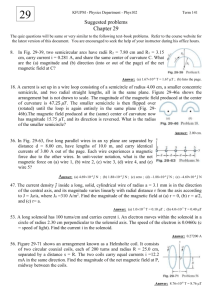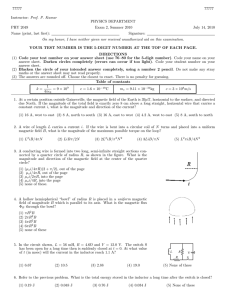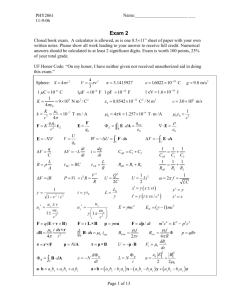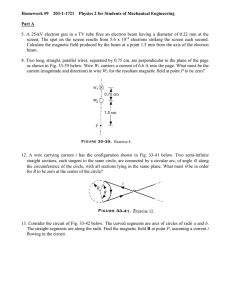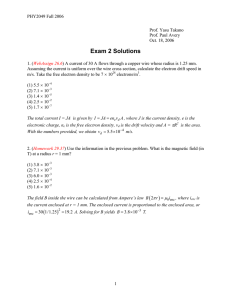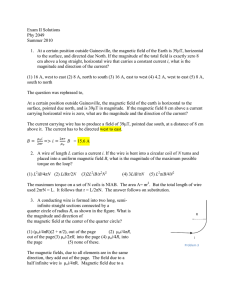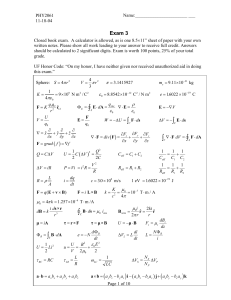Suggest-Prob
advertisement
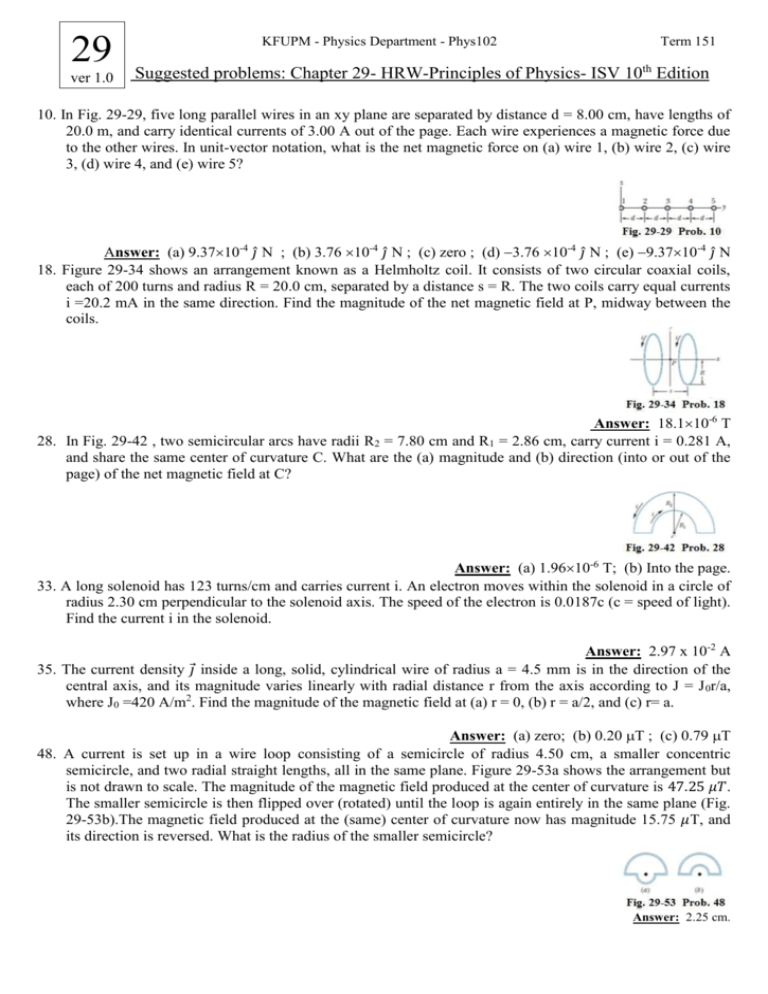
29 ver 1.0 KFUPM - Physics Department - Phys102 Term 151 Suggested problems: Chapter 29- HRW-Principles of Physics- ISV 10th Edition 10. In Fig. 29-29, five long parallel wires in an xy plane are separated by distance d = 8.00 cm, have lengths of 20.0 m, and carry identical currents of 3.00 A out of the page. Each wire experiences a magnetic force due to the other wires. In unit-vector notation, what is the net magnetic force on (a) wire 1, (b) wire 2, (c) wire 3, (d) wire 4, and (e) wire 5? Answer: (a) 9.3710-4 𝑗̂ N ; (b) 3.76 10-4 𝑗̂ N ; (c) zero ; (d) 3.76 10-4 𝑗̂ N ; (e) 9.3710-4 𝑗̂ N 18. Figure 29-34 shows an arrangement known as a Helmholtz coil. It consists of two circular coaxial coils, each of 200 turns and radius R = 20.0 cm, separated by a distance s = R. The two coils carry equal currents i =20.2 mA in the same direction. Find the magnitude of the net magnetic field at P, midway between the coils. Answer: 18.110-6 T 28. In Fig. 29-42 , two semicircular arcs have radii R2 = 7.80 cm and R1 = 2.86 cm, carry current i = 0.281 A, and share the same center of curvature C. What are the (a) magnitude and (b) direction (into or out of the page) of the net magnetic field at C? Answer: (a) 1.9610-6 T; (b) Into the page. 33. A long solenoid has 123 turns/cm and carries current i. An electron moves within the solenoid in a circle of radius 2.30 cm perpendicular to the solenoid axis. The speed of the electron is 0.0187c (c = speed of light). Find the current i in the solenoid. Answer: 2.97 x 10-2 A 35. The current density 𝑗⃗ inside a long, solid, cylindrical wire of radius a = 4.5 mm is in the direction of the central axis, and its magnitude varies linearly with radial distance r from the axis according to J = J 0r/a, where J0 =420 A/m2. Find the magnitude of the magnetic field at (a) r = 0, (b) r = a/2, and (c) r= a. Answer: (a) zero; (b) 0.20 T ; (c) 0.79 T 48. A current is set up in a wire loop consisting of a semicircle of radius 4.50 cm, a smaller concentric semicircle, and two radial straight lengths, all in the same plane. Figure 29-53a shows the arrangement but is not drawn to scale. The magnitude of the magnetic field produced at the center of curvature is 47.25 𝜇𝑇. The smaller semicircle is then flipped over (rotated) until the loop is again entirely in the same plane (Fig. 29-53b).The magnetic field produced at the (same) center of curvature now has magnitude 15.75 𝜇T, and its direction is reversed. What is the radius of the smaller semicircle? Answer: 2.25 cm.
